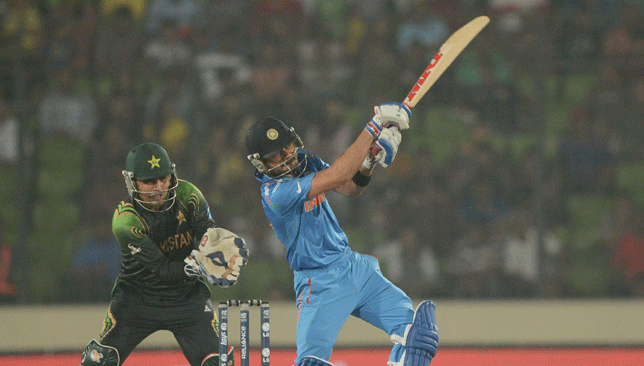
Another World Cup match between India and Pakistan and another victory for the men in blue. That has been the case since the 50-over World Cup in 1992 and there was an encore at the World T20 on Friday.
India didn’t have a lot of trouble restricting Pakistan’s weak batting line-up to 130 and then chased down the runs with ease, in what was one of the more unremarkable India-Pakistan clashes in recent memory.
Generally, there are very few strategies one can implement in a Twenty20 match. Unless the wicket favours the bowlers, it’s difficult to say which bowler will flourish or, for that matter, which batsman will hit the big ones.
But looking at India’s performance, some inferences can be drawn. Firstly, strengthening the bowling for a T20 match was a smart move.
India went in with five specialist bowlers – including spinners Amit Mishra, Ravichandran Ashwin and Ravindra Jadeja – and with the likes of Yuvraj Singh and Suresh Raina also in the mix, Mahendra Singh Dhoni had enough options.
It’s not a luxury but the outcome of a necessity that India are concentrating on bowling. In this season’s limited overs matches, India’s batsmen – led by Virat Kohli – have plundered runs home (Australia) and away (South Africa and New Zealand).
But what has failed them regularly is their weak bowling. India don’t have three all-weather bowlers who can be banked upon.
So instead, they went with five decent bowlers who collectively can be expected to get the job done with the target now to simply stop the flow of runs.
There is no guarantee that the top order batsmen won’t falter. But in Twenty20 cricket, the likes of Jadeja and Ashwin are more than capable of clearing the boundaries.
After the win, Dhoni admitted that the set-up might change because teams bowling second have to tackle dew.
But even if the Indians have to bowl in the second innings with a wet ball, they will be able to exert some pressure with six or seven bowling options, and that decent ones too.
India have always had a strong batting unit and they will need to strengthen their bowling resources, not only for the ongoing World T20, but for next year’s World Cup in Australia and New Zealand.
Spinners might not bail them out Down Under, but this focus on improving their attack should stand them in good stead.